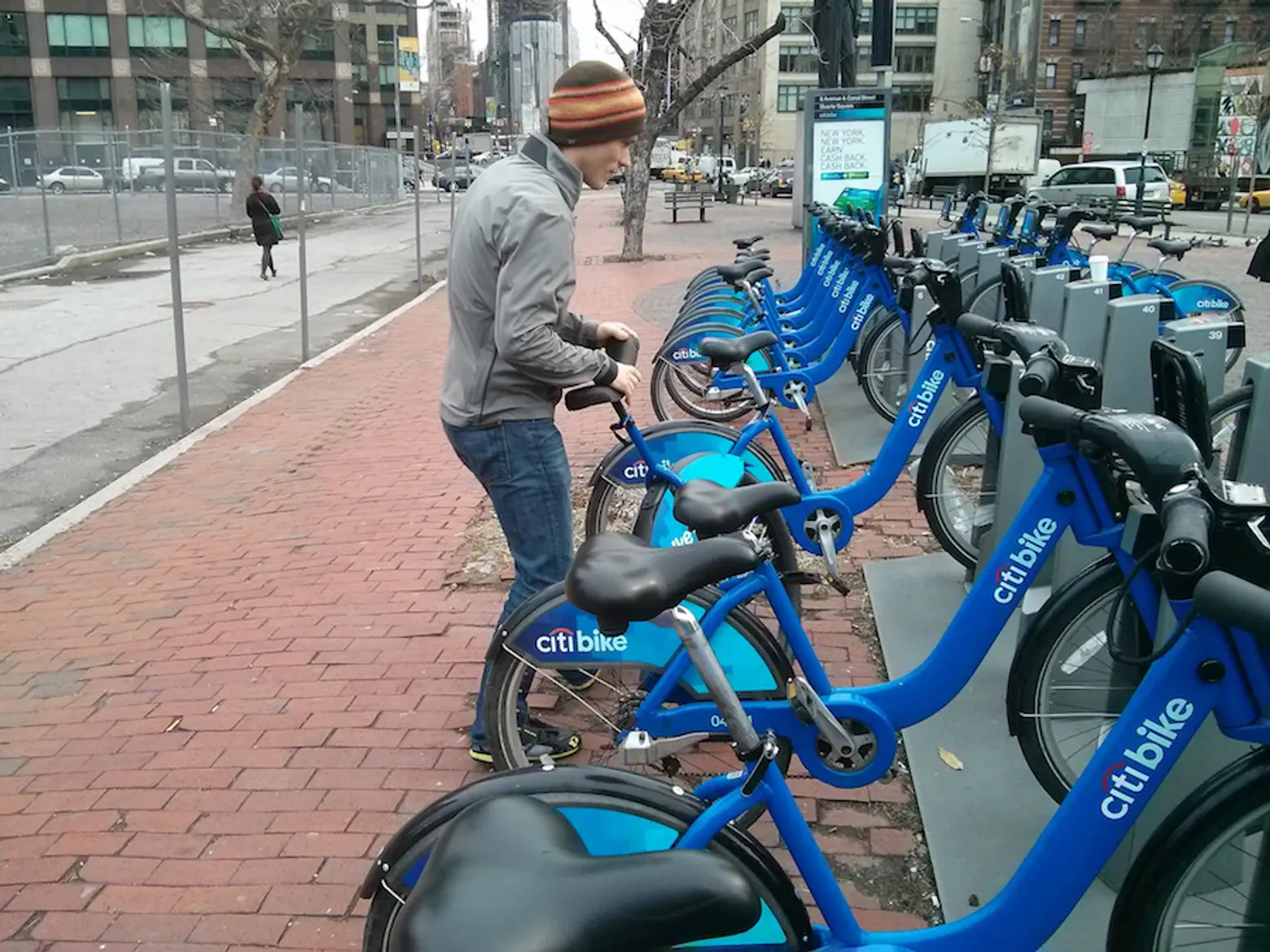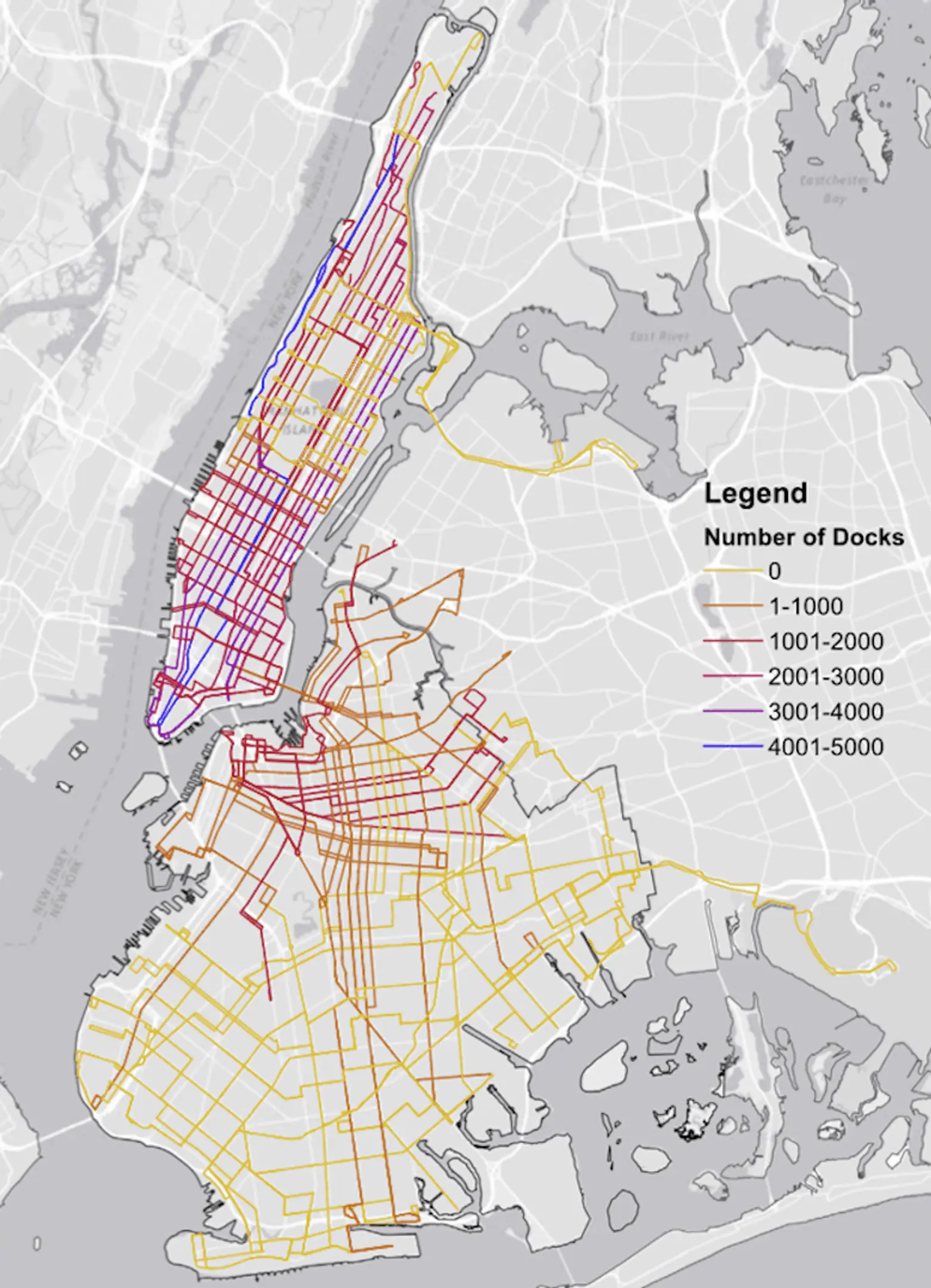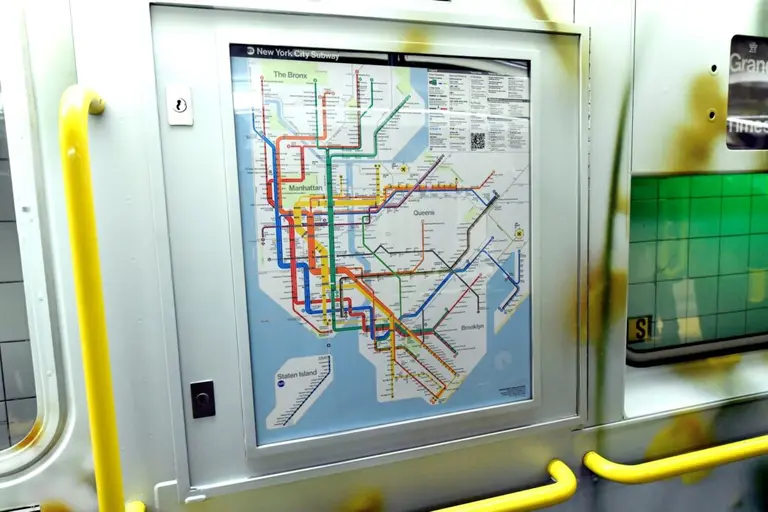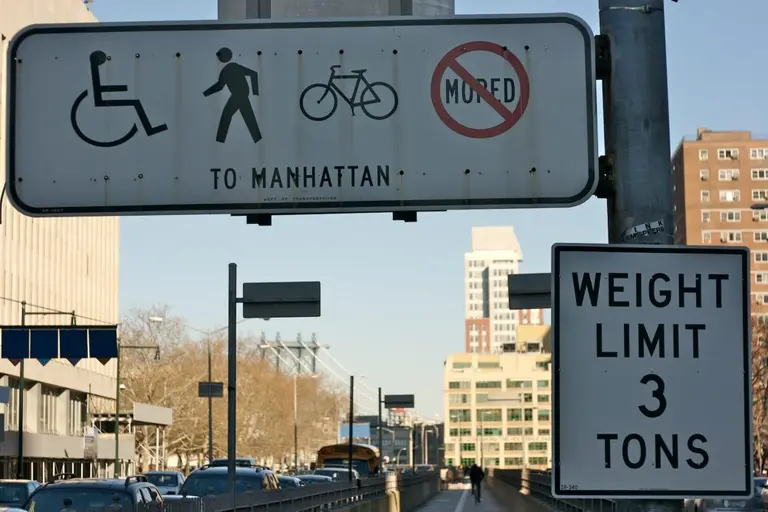New research shows that people are choosing Citi Bikes over the bus

Photo via Peter Burka on Flickr
A new before-and-after study shows that in New York City thousands of potential bus rides are likely happening by bike instead, reports CityLab. Recent research published in a new journal article on bike sharing stations along city bus routes, by Kayleigh Campbell and Candace Brakewood, an assistant professor of civil engineering at the City College of New York, revealed that for every thousand Citi Bike docks situated along Brooklyn and Manhattan bus routes, bus trips dropped by 2.42 percent. The study includes trips made between May 2012 and July 2014 and controls for a wide variety of factors in order to show the impact of bike sharing on bus ridership.

Number of bike-share docks within a quarter-mile of the bus routes studied. (Campbell and Brakewood)
Numerous studies have been done on bike share and public transit ridership data; the most common way to find out the impact bike share has on transit habits has been to ask users directly. Surveys done in Montreal, Washington, D.C., and the Twin Cities pointed to as much as 47 percent of bike-share users saying they had reduced their bus trips; but as many as 14 percent said they ended up using the bus more. It turns out that in some cases bike sharing and other forms of transit complement one another, while at other times they’re competitors.
One survey was done by NYC’s Citi Bike at the end of April involving 645 members, according to parent company Motivate spokesperson Dani Simons. Members were asked how they would have made their trip if Citi Bike did not exist: 5.8 percent said they would have gone by bus, Simons says, while 8.3 percent would have taken a taxi or for-hire car like Uber.
Motivate does not, however, make survey data available to the public or researchers, so Campbell and Brakewood had to find another way to compare bike share and bus trips. Citi Bike is required by its contract with the city to post detailed usage data on its website. This allowed the researchers to track the location and size of, and the number of trips taken from, each bike-share station. To measure bus ridership, the researchers used detailed MTA data, including the daily number of bus trips per route. They took numerous factors into account including full-fare vs. reduced fare ridership for seniors and the disabled as well as the expansion of bike lanes, changes in bus routes and other factors like the increasing usage of for-hire cars like Uber.
Every way they looked at the data, the researchers saw that the introduction of bike share coincided with a drop in bus ridership, adding up to a 2.42 percent drop in bus trips associated with every thousand bike-share docks (controlling for the expansion of bike lanes makes the drop a smaller 1.69 percent as some bus riders could be riding their own bicycles instead of a Citi Bike), a reduction of between 12,600 and 18,100 bus trips a day after Citi Bikes were introduced. This is a significant amount, considering that Citi Bike trips per day averaged to 26,000 during the period of the study.
But this isn’t necessarily bad news for other types of public transit–it simply shows that bike sharing is another public transportation option. “Instead of talking about them as competitors, the more useful conversation is about how they interact.” Campbell and Brakewood acknowledge “that there’s room for more fine-tuning” and to better allow for the growth of ride-hailing services as more data becomes available. They’d like to ask New Yorkers more about bike share to learn about how it has changed the transportation decisions people make, and to do a survey that includes people who aren’t bike share members to better understand how people are getting around the city.
Transit advocates and agencies have been focused on improving bus service, intent on solving the puzzle of falling bus ridership. “Overall, not just in New York but also in many other major cities, we are seeing decreases in bus ridership,” Brakewood says. “Bike share is one contributor of many.
[Via CityLab]
RELATED:




























